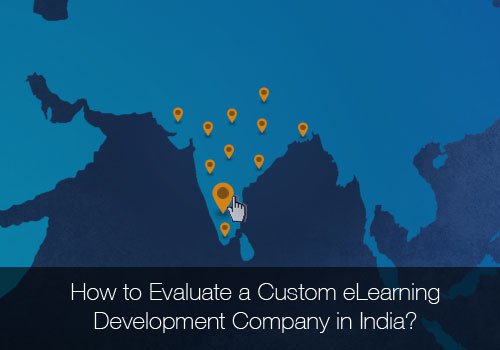
Competency-based learning (CBL) is now a key corporate learning strategy. In this post, we’ll explore what CBL is, and how it uses personalized pathways and AI-driven innovations to reskill employees and reshape training for tomorrow’s workforce.
Definition, Core Principles, and Applications of Competency-Based Learning (CBL)
Competency-based learning (CBL) is a strategic approach that focuses on the demonstration of proficiency in predetermined competencies or skills. Unlike traditional learning models, CBL allows learners to progress at their own pace, advancing only upon mastery of each competency.
Core Principles
CBL prioritizes proficiency in predetermined skills, allowing learners to progress at their own pace upon mastering each competency. Personalization is integral, offering tailored instructions and assessments to meet diverse needs, and enhancing engagement and comprehension. Central to CBL is a competency framework, that provides structured curricula, guiding learners towards mastery, while continuous feedback fosters improvement. Flexibility in learning pathways is essential to promote autonomy and motivation, ensuring effective skill development tailored to individual learners.
Applications
CBL is widely applicable across organizational contexts. In corporate training, it ensures the development of job-specific competencies, enhancing workforce performance and aligning with organizational goals. In higher education, CBL equips students with practical skills for career success and fosters lifelong learning. Additionally, in professional development, CBL facilitates career advancement and boosts job satisfaction. In workforce development programs, CBL closes skill gaps and enhances economic mobility, driving social and economic progress.
Why Organizations Choose Competency-Based Learning
Organizations opt for competency-based learning (CBL) to prioritize mastery of specific skills and competencies, aligning learning outcomes with business objectives. This approach fosters a workforce capable of tackling evolving challenges and driving innovation. In today’s rapidly changing business environment, bridging competency gaps within the workforce is crucial. CBL offers a targeted solution by focusing on the specific skills needed to meet both current and future demands.
Additionally, CBL enhances employee development plans by providing a structured framework for skill acquisition and progression. By investing in CBL, organizations demonstrate a commitment to talent development and staying competitive in a dynamic business landscape.
Importance of Supporting Right-Skilling with Competency-Based Learning
CBL is crucial for supporting right-skilling within organizations by systematically identifying, developing, and assessing specific competencies required for various job roles. This targeted approach enhances overall workforce effectiveness and enables organizations to address skill gaps strategically. Moreover, CBL offers flexible learning pathways aligned with individual needs and career aspirations, fostering continuous improvement and adaptation to industry trends.
Additionally, CBL plays a strategic role in talent management and workforce planning, facilitating proactive talent development and retention. By leveraging measurable outcomes, organizations can optimize training investments and enhance overall performance, navigating the complexities of the business environment confidently. Ultimately, CBL empowers organizations to achieve strategic objectives and remain competitive by leveraging their most valuable asset—their people.
Benefits of Competency-Based Learning
CBL offers a multitude of benefits when integrated into organizational frameworks. When integrated into organizational frameworks, CBL ensures strategic alignment by matching competencies with corporate objectives, driving growth and performance. It enhances cost-effectiveness and productivity by prioritizing essential skills and maximizing workforce efficiency. It also promotes employee mobility and cross-training, fosters transparent pathways for development, and tailors learning experiences to individual needs, enhancing efficacy.
Moreover, CBL sets clear expectations, improves motivation and engagement, elevates service quality, and aligns personal growth with organizational goals. By empowering employees to acquire valued skills and fostering continuous development, CBL reduces turnover and promotes loyalty within the organization.
Developing a Competency-Based Program
Creating a CBL program requires careful planning and execution to ensure alignment with organizational objectives and learner needs. Here’s a 7-step plan to develop a CBL program:
-
Step 1: Conduct a Competency Gap Analysis:
Identify any discrepancies between the current employee competencies and the desired skill levels through a thorough analysis.
-
Step 2: Establish a Competency Framework:
Define clear competency frameworks outlining the skills and knowledge required for various job roles within the organization.
-
Step 3: Design Learning Objectives and Assessment Criteria:
Develop specific learning objectives and assessment criteria aligned with each competency, ensuring clarity and measurability.
-
Step 4: Develop Learning Content and Resources:
Create engaging learning content and resources tailored to address identified competency gaps and learning objectives.
-
Step 5: Choose the Right Learning Technology and Tools:
Select appropriate learning technologies and tools that support personalized, self-paced learning experiences.
-
Step 6: Implement the Training Program:
Launch the competency-based training program, providing necessary support and guidance to learners throughout the implementation phase.
-
Step 7: Evaluate Results and Conduct Follow-Up Assessments:
Assess the effectiveness of the training program through ongoing evaluation and conduct follow-up assessments to measure skill improvement and program impact.
By following these steps, organizations can create impactful training initiatives that drive employee development and organizational success.
Immersive Learning Strategies for Competency-Based Training
By leveraging dynamic and interactive learning environments, organizations can foster deeper engagement and improve skill acquisition among learners. Some strategies for doing this include:
-
Simulation Training and Role-Play Based Learning:
Uses VR, simulations, and role-play to immerse learners, boosting engagement.
-
Creating Learning Environments That Drive Effective Competency Building:
Prioritizes experiential learning for practical skill application, enhancing retention and utility.
-
Establishing Safe Practice Zones:
Offers safe spaces for learning through experimentation, fostering innovation without real-world risks.
-
Simulating Real-World Scenarios for Practice:
Prepares learners for actual job tasks by replicating real-life challenges, offering practical exposure to job roles and responsibilities.
-
Driving Learning through Application:
Strengthens learning by promptly applying theory, demonstrating its real-world relevance and practicality.
-
Improving Skill Acquisition:
Boosts skill acquisition with realistic, repetitive practice, speeding up proficiency, and confidence growth.
Incorporating immersive strategies in CBL enhances engagement and boosts real-world skill development.
Measurement Strategies to Assess the Impact of Competency-Based Training
Employing appropriate measurement strategies allows organizations to gauge the success of their training initiatives and make data-driven decisions for continuous improvement. Consider the following strategies, tools, and techniques to assess CBT’s effectiveness in your organization:
Methods to Measure Learning Effectiveness and Alignment
One method to gauge learning effectiveness is through surveys and feedback. This involves collecting input from learners and stakeholders to evaluate satisfaction levels and the perceived effectiveness of the training program. Additionally, pre- and post-assessments measure knowledge gain and skill improvement. Conducting these assessments, before and after learning, provides insights into the impact of the training on participants’ capabilities.
Tools and Techniques for Assessing ROI
Several methods exist for assessing the return on investment (ROI) of training initiatives. One such approach is cost-benefit analysis, which involves comparing the costs associated with implementing training programs to the benefits derived. These benefits may include increased productivity, reduced turnover, or other measurable outcomes.
Additionally, the Kirkpatrick Model offers a structured framework for evaluating training effectiveness and ROI. It encompasses four levels of evaluation: reaction, learning, behavior, and results. By leveraging these levels, organizations can comprehensively assess the impact of training on various aspects of performance and determine its overall return on investment.
Selecting KPIs Linking Learning Outcomes to Business Performance
When selecting key performance indicators (KPIs) to link learning outcomes to business performance, organizations consider various metrics. Companies commonly track employee performance metrics, including productivity, quality of work, and customer satisfaction, to evaluate the impact of training on individual performance. By monitoring these metrics, organizations can assess how learning initiatives contribute to enhancing employee capabilities and driving business objectives forward.
Additionally, tracking revenue growth is essential for measuring the direct impact of training on business outcomes. Businesses closely monitor any changes in revenue, attributed to improved employee skills and performance resulting from training initiatives, providing valuable insights into the effectiveness of learning programs in driving organizational success.
Measuring the impact of competency-based training is crucial for evaluating its effectiveness and ensuring alignment with organizational goals.
Examples of Competency-Based Training
While there are numerous examples of competency-based training in corporate and professional settings, here are a few:
Leadership Development Program
In this program, participants undergo CBL focused on leadership skills like communication and strategic thinking. Assessments include simulations and 360-degree feedback, with personalized development plans based on strengths and areas for improvement.
Sales Training Program
Sales professionals engage in CBL to improve prospecting, negotiation, and relationship-building skills. Training includes role-playing, case studies, and simulations for practical experience and learning reinforcement.
Technical Certification Course
IT pros pursue CBL for certifications in areas like cloud computing or cybersecurity. Assessments include labs, exams, and projects, ensuring mastery of specific technical skills.
Outlook and Innovations
In today’s dynamic business landscape, Competency-Based Learning (CBL) is set to play a more critical role in shaping the workforce amid evolving innovations. More organizations will embrace the use of personalized learning pathways that leverage advanced analytics to tailor experiences, ensuring optimal outcomes. There’ll be greater use of micro-credentialing to validate specific skills, promoting continuous learning and career advancement. Immersive environments, like VR and AR, are set to enhance skill acquisition through lifelike simulations.
When used in CBL, gamification will boost engagement and competency retention, making learning enjoyable and participatory. AI offers personalized recommendations and predictive analytics for proactive skill development. Using automated assessment tools, CBL will help L&D teams streamline feedback, fostering continuous learning. Integration of AI in CBL will also enhance learning outcomes, adapting to changing skill demands effectively.
Parting Thoughts
Organizations choose competency-based learning not only for its effectiveness in addressing immediate skill needs but also for its long-term benefits. By embracing emerging trends and leveraging advanced technologies such as AI and machine learning, organizations can reshape learning strategies, empower learners, and build a future-ready workforce equipped to thrive in an ever-changing world.
Read More
- eBook: The AI Advantage: Transforming L&D for Tomorrow’s Workforce
- eBook: How to Design Learning Journeys that Drive Engagement and Performance
- How to Leverage AI for eLearning Content Development
- Accelerating Organizational Growth: Leveraging AI for L&D Automation
- Leveraging AI for Effective L&D Measurement



